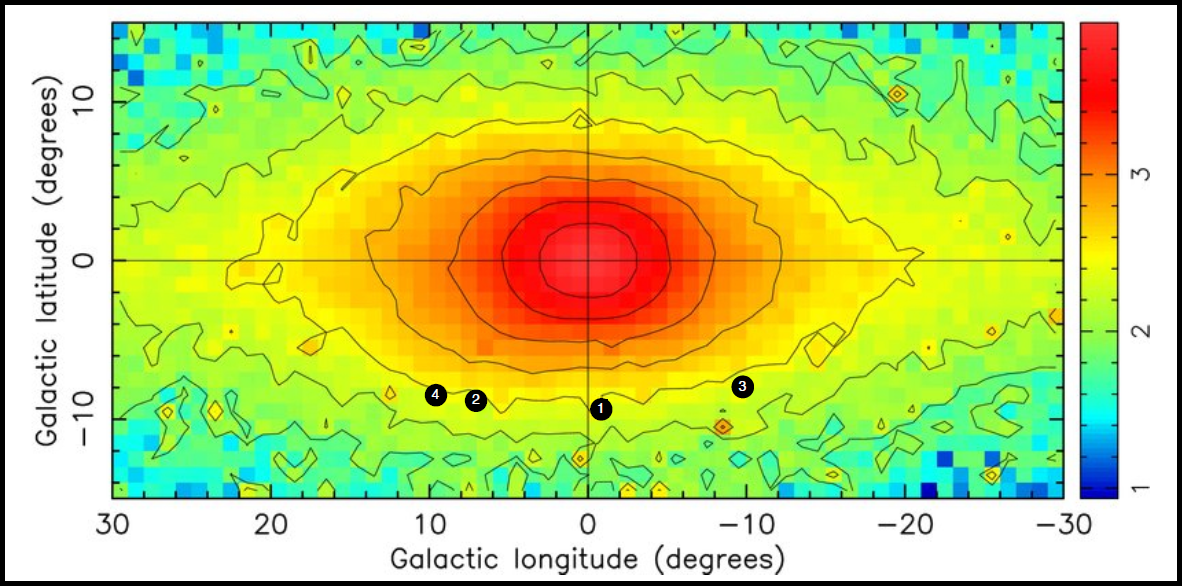
An international team of astrophysicists has identified the most metal-poor stars in the Milky Way bulge. They present their findings in a paper published on Oct. 2. The scientists describe the discovery and analysis of four bulge giants - the lowest metallicity bulge stars studied with high-resolution spectroscopy to date. Using the Fibre Large Array Multi Element Spectrograph (FLAMES) spectra, through the Gaia-ESO Survey they have derived abundances of twelve elements. “Given the uncertainties, we find a chemical similarity between these bulge stars and halo stars of the same metallicity, although the abundance scatter may be larger, with some of the stars showing unusual ratios,” the team writes in the paper.
The first stars in the Universe (referred to as Population III stars) have been extensively searched for, both in the local Universe and at high redshift, but despite massive efforts no true Population III star has yet been found. There is an argument that no such stars should remain today: models of their formation indicate that they would have been massive and shortlived. Recent simulations however have suggested that disc fragmentation could have produced smaller mass stars, some of which may have survived to the present day.
Surveys focusing on the discovery of these old and metal-poor stars have almost exclusively targeted the Galactic halo, although some more recent studies have looked at dwarf galaxies of the Local Group. The halo is known to be on average more metal-poor than other Galactic components, and some of these halo stars pass through the solar neighbourhood, making them relatively uncomplicated to observe.
Few, if any, dedicated attempts have been made to search the Galactic bulge for extremely metal-poor stars. The huge number of stars in the bulge, the distance to the bulge, and the high degree of extinction in the Galactic plane make it practically very difficult to find metal-poor stars there. “This letter is the first in a series of papers exploring the results of the EMBLA (Extremely Metal-poor BuLge stars with AAOmega) survey, which aims to find the most metal-poor stars in the bulge,” the paper reads.
The researchers report that from the first 3,600 stars observed in April and July 2012, ten were immediately identified as very metal-poor candidates. Six of these targets were observed with FLAMES/UVES spectrograph on the Very Large Telescope (VLT) as part of the Gaia-ESO Survey in May and August of 2012. Finally, the team has identified stars that are confirmed (based on high-resolution spectroscopy) to have lower metallicities than any previously published metal-poor bulge star. “We have presented an abundance analysis of four of these [stars], observed in high-resolution as part of the Gaia-ESO Survey. These four are all considerably more metal-poor than any previously studied bulge star,” they conclude.
Gaia-ESO is a public spectroscopic survey, systematically covering all major components of the MilkyWay, from halo to star forming regions, providing the first homogeneous overview of the distributions of kinematics and elemental abundances.




Comments